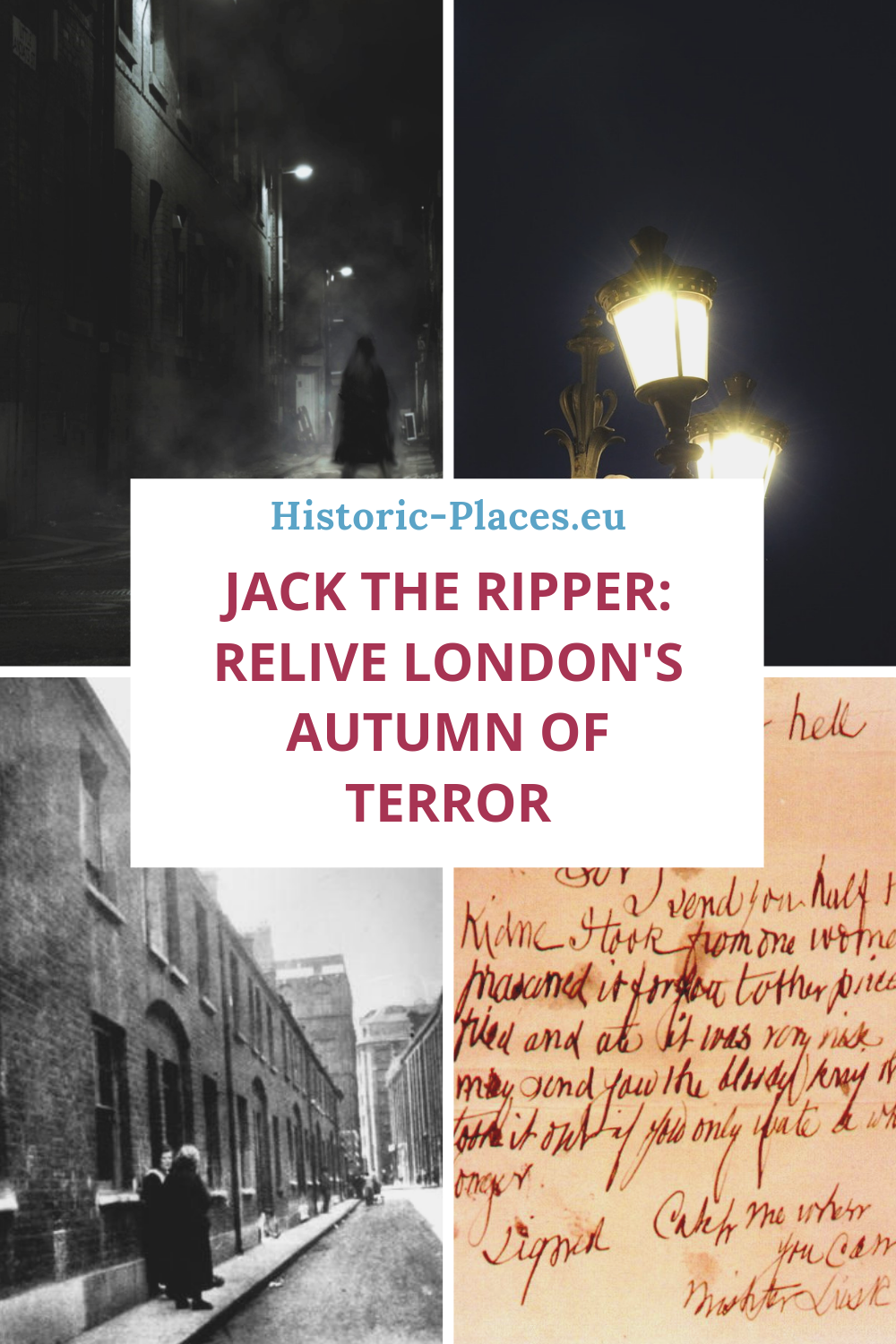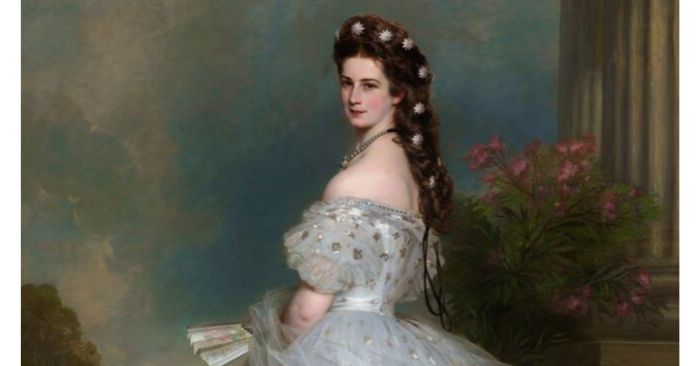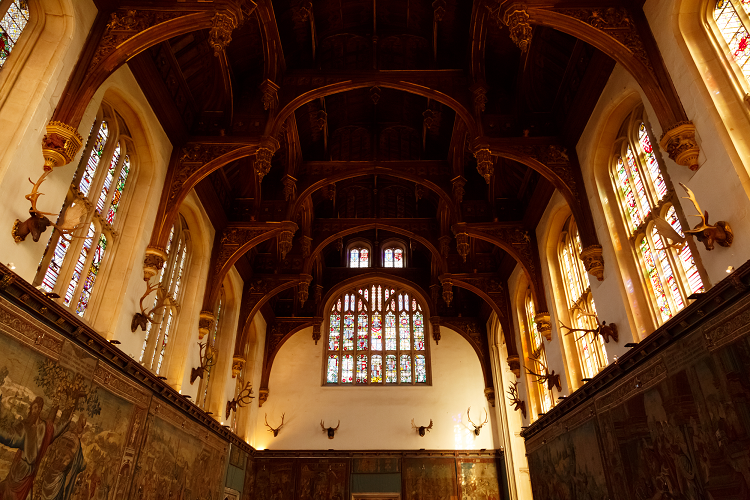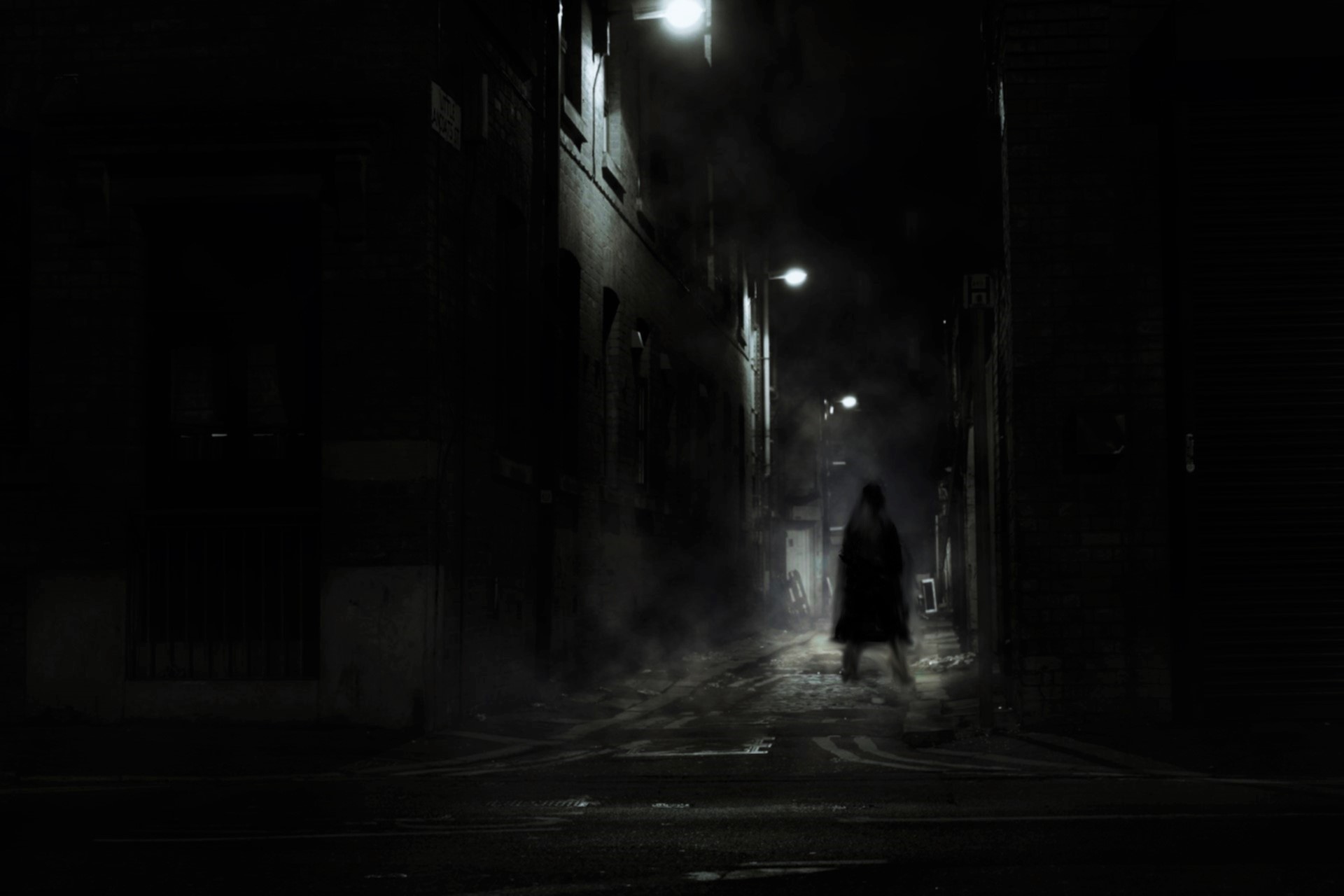
Jack the Ripper: To this day unknown, to this day a mystery, to this day a fascination that has no equal. He is regarded as the first serial killer of the modern age and is often the first thing that occurs to many, they hear the word “Whitechapel”, the place of his deeds.
Jack the Ripper murdered five prostitutes between August 31st and November 9th 1888 in the London district Whitechapel in a mostly bestial way. Afterwards he disappeared. And despite many suspects, theories and speculations, his identity is still unknown today. Was he a Jewish butcher? A German sailor? An American quack doctor? Or even the grandson of Queen Victoria?
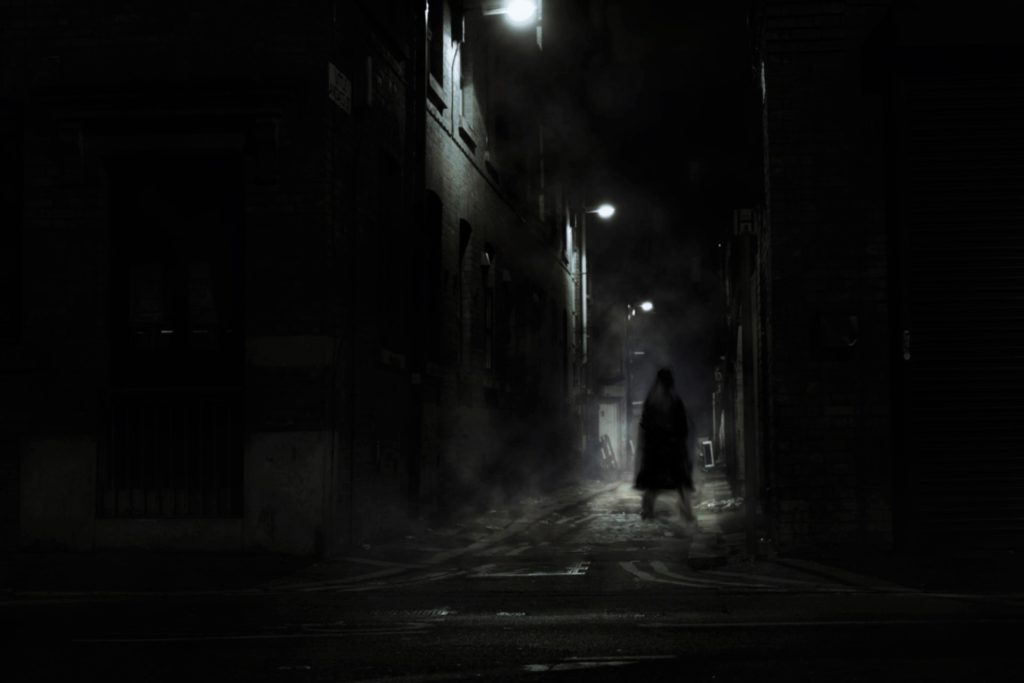
The world in Jack the Ripper’s day
At that time, London was the largest city in the world with about six million inhabitants – and hopelessly overpopulated. An estimated 600,000 people lived in Whitechapel alone. Both housing and jobs were lacking, forcing many women to work as prostitutes. Alcohol abuse, crime and violence were ubiquitous.
 In this milieu Jack the Ripper struck. Among the poorest of the poor. Why he chose prostitutes as victims, of all people, still inspires the imagination of Ripperologists today. His cruel murders quickly brought a lot of prejudices to light: it couldn’t possibly be an Englishman! There were attacks against Jews, and other immigrants were also targeted. The possibilities of police investigations were very limited at that time. Actually, Jack would have needed to be caught with the murder weapon next to the victim in order to arrest him.
In this milieu Jack the Ripper struck. Among the poorest of the poor. Why he chose prostitutes as victims, of all people, still inspires the imagination of Ripperologists today. His cruel murders quickly brought a lot of prejudices to light: it couldn’t possibly be an Englishman! There were attacks against Jews, and other immigrants were also targeted. The possibilities of police investigations were very limited at that time. Actually, Jack would have needed to be caught with the murder weapon next to the victim in order to arrest him.
So only circumstantial evidence, suspicions and a lot of speculation remained. Together with the upcoming sensational press the myth arose that Jack the Ripper is until today.
August 31st 1888: Polly Nichols
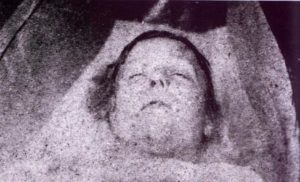 Polly Nichols (43 years old) opened the round of horrors by becoming Jack the Ripper’s first victim. She was alcoholic, penniless, and struggled to make ends meet with prostitution. On the morning of August 31st, her body was found at Buck’s Row (now Durward Street) in Whitechapel.
Polly Nichols (43 years old) opened the round of horrors by becoming Jack the Ripper’s first victim. She was alcoholic, penniless, and struggled to make ends meet with prostitution. On the morning of August 31st, her body was found at Buck’s Row (now Durward Street) in Whitechapel.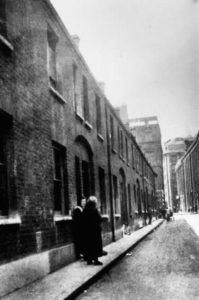
At about 1:30 a.m., Polly tried to get a place to sleep in an accommodation on Thrawl Street. But she was thrown out because she didn’t have the money. She announced that she would earn her overnight allowance quickly because she had a nice new hood. About an hour later her friend Ellen Holland met Polly at the corner of Osborn Street and Whitechapel High Street. Polly said she had earned her overnight allowance three times, but drank it all up again. Ellen tried to persuade Polly to come back to Thrawl Street with her anyway, but Polly refused. This was the last time she was seen alive.
Polly Nichols was found murdered at Buck’s Row around 3:45 a.m. Polly’s throat had been cut and her abdomen slit. Her body had several bruises and punctures.
September 8th 1888: Annie Chapman
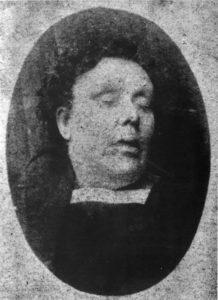 When Annie Chapman was found murdered, the suspicion must have slowly arisen that this was more than the “usual” crime of Whitechapel. Only eight days had passed since the death of Polly Nichols, since the last bloody massacre of a prostitute. And the still nameless Ripper had not yet reached the height of his cruelty.
When Annie Chapman was found murdered, the suspicion must have slowly arisen that this was more than the “usual” crime of Whitechapel. Only eight days had passed since the death of Polly Nichols, since the last bloody massacre of a prostitute. And the still nameless Ripper had not yet reached the height of his cruelty.
In 1888 Annie Chapman (46) lived in poor shelters and earned her living through casual work and prostitution. The week before her death, she got into a fight with a roommate in which she was injured. The afternoon before her death, she told an acquaintance that she felt ill, but that she had to go out to the street to earn her living. At 1:30 a.m. she had either not had the money yet, or she had spent it on alcohol in the meantime. She got thrown out of her shelter because she couldn’t pay for it. The landlord told her that she could always get money for drinks, but never for her bed for the night. So just like Polly Nichols, Annie had to go out on the street to earn money for her accommodation.
Towards the end of the night, at 5:30 a.m., witness Elizabeth Long saw Annie Chapman talking to a man in front of house number 29 on Hanbury Street. Long described the man as over 40, slightly taller than Annie, dark-haired and foreign. He was wearing a Deerstalker cap and a dark coat. The man asked Annie “Will you?” and Annie answered “Yes”.
A few minutes later, a man came into the backyard of the outbuilding and heard voices from the yard of No. 29. He understood how a woman said “No” and then heard something fall against the fence. But he did nothing.
Less than 30 minutes later, at about 6 a.m., Annie Chapman’s body was found in the courtyard of 29 Hanbury Street.
Annie’s throat had been cut up to her neck. Her abdomen was slit open, like Polly Nichols’. But now the murderer had taken the guts of his victim from the abdomen and thrown them over her shoulder. Her uterus, however, had been carefully removed and apparently taken away. This led to the assumption that the perpetrator must have medical knowledge.
September 30th 1888: Elizabeth Stride and Catherine Eddowes
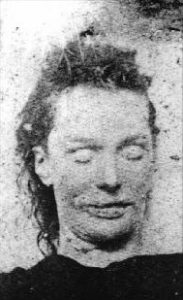 Elizabeth Stride (45) and Catherine Eddowes (43), the so-called “double event.” Both prostitutes were killed in the same night, less than an hour and a mile apart, presumably by Jack the Ripper.
Elizabeth Stride (45) and Catherine Eddowes (43), the so-called “double event.” Both prostitutes were killed in the same night, less than an hour and a mile apart, presumably by Jack the Ripper.
Elizabeth Stride was seen over the evening with presumably different men. Two workers, who saw her with a man, even warned her at 11 p.m. that her companion was the presumed murderer. About an hour and a half later, Israel Schwarz saw Elizabeth in the gateway to Dutfield’s Yard on Berner Street, the later crime scene. She spoke to a man who tried to pull her into the gate and then threw her to the ground. Across the street there was another man who called Schwarz “Lipski”. The Jew Israel Lipski had murdered a woman the year before, and his name was an insult to Jews. Schwarz fled, and the second man followed him for a while.
Less than half an hour later, around 1 a.m., the body of Elizabeth Stride was found in Dutfield’s Yard. Her throat was cut, but no further mutilation was inflicted. Some therefore suspect that she had not been a victim of the Ripper. Another explanation could be that the murderer was disturbed in his crime. In any case, the crime must have gone quickly. Elizabeth still had a package of dragées in her hand.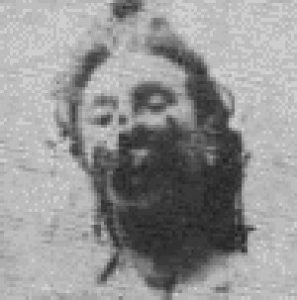
Also at 1 a.m. Catherine Eddowes was released from the sobering cell of the police station Bishopsgate. She had been found dead drunk in Aldgate High Street at 8.30 p.m. She had first imitated a fire engine to the delight of the surrounding passers-by and then lay down on the sidewalk to sleep. As she left the station, she did not turn right on the shortest way to her accommodation in Flower and Dean Street. Instead, she turned left, heading for Aldgate again. Probably to continue drinking. The decision will cost her her life. At 1:35 she was seen talking to a man at the passage to Mitre Square. This man was probably the Ripper. Catherine was murdered between 1:35 and 1:45 in Mitre Square. Similar to Annie Chapman, Catherine Eddowes’ throat was cut, her stomach opened, and her intestines placed over her shoulder. Her face was disfigured with numerous cuts. Her half uterus and a kidney were missing.
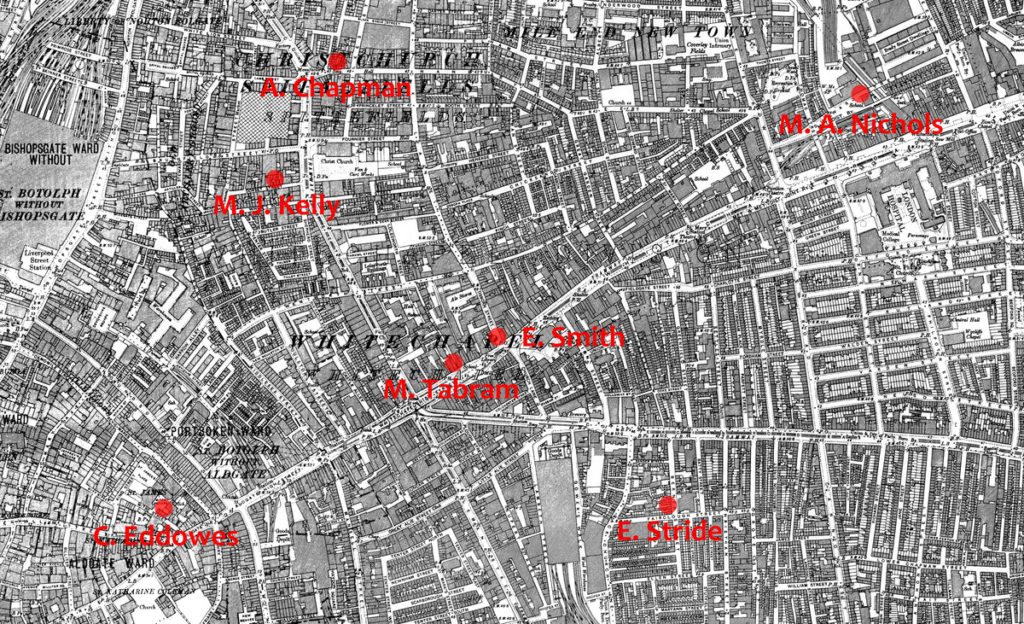
November 9th 1888: Mary Jane Kelly
With Mary Jane Kelly the autumn of terror came to an end on the morning of November 9th 1888, when her cruelly mutilated corpse was discovered in her shabby accommodation. More than five weeks had passed since the murder of Elizabeth Stride and Catherine Eddowes. Some must have wondered whether Jack the Ripper had finished his bloody work – voluntarily or involuntarily. But then Jack came back, more bloody and cruel than ever.
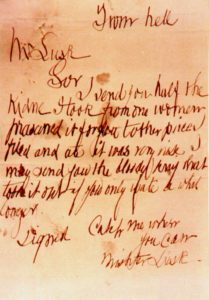 On October 16th, George Lusk, chairman of the Whitechapel militia, was sent a package containing half a human kidney. Also in the package: The “From Hell” letter, which claimed that the kidney came from one of the victims, presumably Catherine Eddowes. At the same time, the police interrogated 80 suspects and followed hundreds of leads.
On October 16th, George Lusk, chairman of the Whitechapel militia, was sent a package containing half a human kidney. Also in the package: The “From Hell” letter, which claimed that the kidney came from one of the victims, presumably Catherine Eddowes. At the same time, the police interrogated 80 suspects and followed hundreds of leads.
Scotland Yard increased the number of policemen patrolling Whitechapel during the night from 27 to 89. Many prostitutes gave up their trade for fear of becoming the next victim of the Ripper.
But as the weeks went by, the panic of the population eased somewhat. And many of Whitechapel’s 1,200 prostitutes resumed their work, often out of necessity. This of course played into the hands of the murderer, because, as the police had understood in the meantime: Jack the Ripper was not dependent on seeking an opportunity to murder. His potential victims constantly took men to remote places. And that’s exactly how the bloodiest of the Ripper murders happened.
Mary Jane Kelly, at 25 years of age and described as a beauty, was very different than the other Ripper victims who have been women mid-forties of ill health. Mary began her last night on earth singing extensively. According to her neighbors, she sang the song “A violet I plucked from Mother’s grave” in her room from midnight until one o’clock in the morning. In between she ate fish and potatoes for late dinner. Afterwards she continued singing.
At two o’clock Mary Jane Kelly was seen in Commercial Street. Afterwards Mary went towards Aldgate and found a customer near Thrawl Street. The man was described as dark-haired, dark-eyed, moustached and “Jewish-looking. He was dressed in a posh dress, wore a hat and a long black coat, was about 1.70 m tall and about 35 to 36 years old. Mary and he talked and laughed together, then Mary told him to come with him, he would have it comfortable. A neighbor of Mary said she had come home at three o’clock, and Mary’s room was dark and quiet. Another neighbor was woken up an hour later by her cat and thought she heard a silent “murder! But this was not uncommon in this neighborhood, so she didn’t look. At about six o’clock someone was heard leaving Miller’s Court.
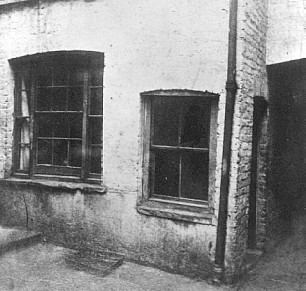
When at 10:45 a.m. a helper of the landlord tried to collect Mary’s overdue rent, he saw Mary Jane Kelly’s cruelly dressed corpse lying on the bed through the window.
If the Ripper had always committed his previous murders on the street, he could take as much time as he wanted in the shelter of Mary’s room. Mary’s throat was cut to the bone, which killed her. All further injuries were inflicted after her death. Here, too, the murderer had probably taken an organ with him, because Mary Jane Kelly’s heart had disappeared. The coroner estimated that the mutilation had taken two hours and that the onset of rigor mortis indicated that Mary Jane Kelly had been murdered between two and eight o’clock.
After the murder of Mary Jane Kelly, Scotland Yard increased its patrols again to 143 men. But no further murder happened, or at least none that was undoubtedly assigned to Jack the Ripper.
Who was Jack the Ripper?
I don’t think there will ever be a clear answer as to who Jack the Ripper was. Most of the tracks have long since been blurred, and even modern technology can hardly change that. Moreover, the case lives from its mystery, and of course from the ever-increasing interest in conspiracy theories.
There will still be many theories and suspects. But the true ripper has disappeared in the fog of time – how fitting.
Fancy following the footsteps of Jack the Ripper and his unfortunate victims?
Like to feel the eerie atmosphere of the sites of his murders?
There are multiple Jack the Ripper tours which will take you back to Victorian London on your next England trip!
